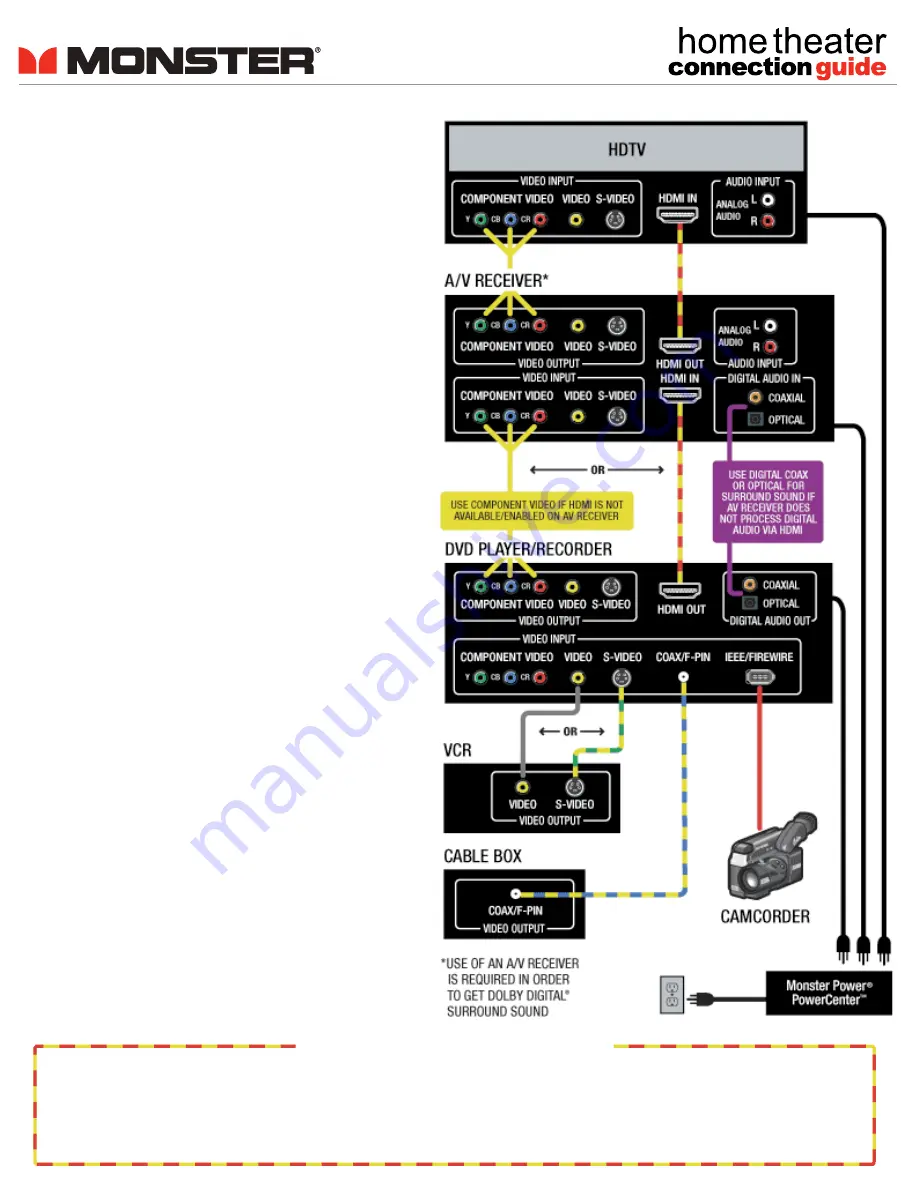
DVD PLAYER/
RECORDER
DVD players offer near HDTV-quality pictures
and high-resolution surround sound, but
only when using the right connections.
• The best quality video connection you can
make from a DVD player is the HDMI connec-
tion. Many newer DVD players and recorders
feature an HDMI connection -- if you've got it,
and your TV and/or AV receiver can accept it,
use this connection.
• The next best video connection you can make
from a DVD player/recorder is a Component
Video connection. Besides HDMI, this connec-
tion is the only way to enjoy the benefit of
progressive-scan video from your DVD player,
which results in a dramatically smoother, flicker-
free picture.
• If neither HDMI nor Component Video is
available on your DVD player, or if you have an
older TV and/or A/V receiver, use an S-Video
connection. You won't get the benefit of progres-
sive scan picture, but the picture will still be
clearer than connecting with basic Composite
Video cable.
• Use the DVD player's HDMI, Fiber Optic or
Digital Coax connection to send the audio from
your player to the A/V receiver. This keeps the
digital surround and stereo audio in its pure
digital form for the receiver to process.
• For the best possible picture and sound, plus
protection from surges and spikes, use a Mon-
ster PowerCenter™ with Clean Power® to
connect your DVD player and other home
theater components.
Monster HDMI Connection Tip
Certain A/V receivers, digital cable/satellite receivers, DVD players and digital TVs may not output/process audio or repeat
HDCP encoding when connected via HDMI—causing loss of audio or connection failure.
You may need to connect using Component Video and Digital Audio connections, depending upon your system equipment.
Check products manuals and visit
MonsterHDMICertified.com
for the latest HDMI device compatibility info!



















